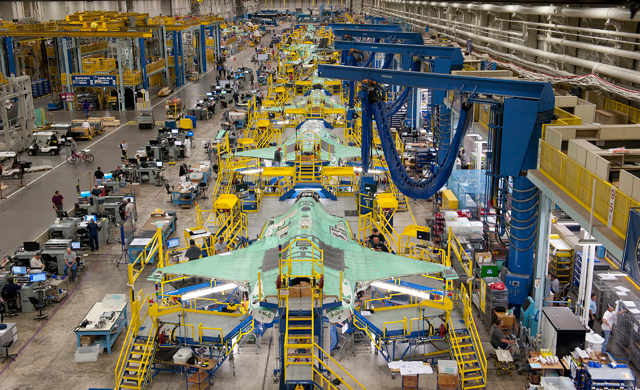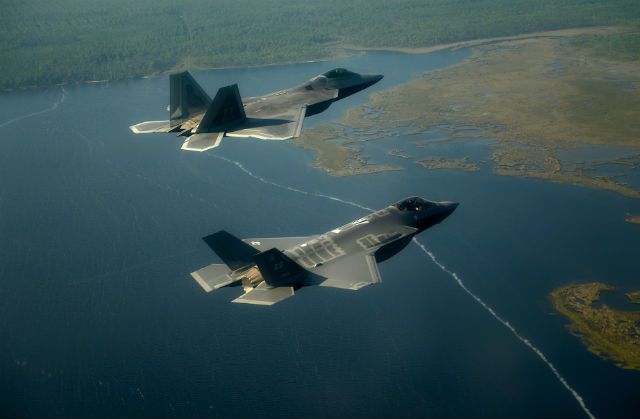The Pentagon says it has enough confidence in the F-35 Joint Strike Fighter programme to start planning for a three-year block buy that would purchase about 450 jets from prime contractor Lockheed Martin.
The block buy would include F-35s for programme partners and foreign military sale (FMS) customers, and would cover aircraft procurement for fiscal years 2018 to 2020. The deal needs the blessing of Congress to proceed, and those discussions will begin soon.
“We’re feeling optimistic enough about the programme that we’re going to proceed with the planning on that, and we’ll be talking to the Congress about it,” DOD acquisition chief Frank Kendall told reporters in a teleconference call from Oslo, Norway.
By bundling the orders into a single, three-year production contact, Kendall says he expects to see “double-digit savings”, with multiyear procurements historically achieving a 5% to 15% cost reduction. The block buy is not covered under the same statute as a multiyear procurement, but has the similar effect of guaranteeing production quantities several years out instead of having to negotiate single-year lots, or exercise options in a base-year agreement.
“It would include our international partners and it could also include FMS customers,” Kendall says. “It allows industry to plan with some confidence in the next few years of production.”

Flightglobal reported in April that the joint programme office intended to block-buy 477 Pratt & Whitney F-35 engines, and there has been general discussion about a multiyear purchase of some kind. But Kendall’s comments confirm that a three-year order is the preferred way ahead as production scales up. His comments come at the end of an annual F-35 Chief Executives Officers Conference in Norway.
Kendall says the block buy will help the programme achieve the “economies of scale” it needs to reduce the aircraft’s unit cost from about $110 million today to about $80 million. He says it would also incentivise international partners stick to their planned F-35 quantities and not cut orders.
“We want to set up an arrangement where there is a premium for people who stay in the program as planned, so people who commit to being in the block buy get a financial benefit from that,” he says. “If they weren’t, obviously they’d experience some cost increases.”

In another development, Kendall confirmed that the programme will shift from contractor logistics support for F-35 sustainment activities to a performance-based arrangement, where Lockheed and Pratt would guarantee a level of aircraft availability and readiness instead of being paid by the hour for support services.
“Our historical analysis shows 10% to 15% reductions roughly for performance-based logistics (PBL) over a transactional way of doing logistics support,” he says. “The idea is to go to a structure where we can do PBL at the system level. It won’t be instantaneous or overnight. We’re trying to do it as we go along as much as we can because it’s a preferred way of doing business when it’s available.”
Source: FlightGlobal.com
















